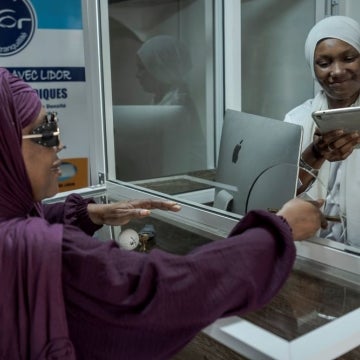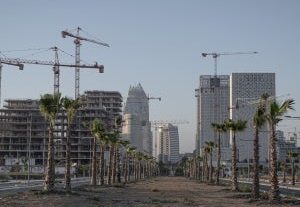It’s time to rethink how we serve the hardest to reach—and unlock the power of financial services for development.
New data from the World Bank’s Global Findex 2025, published this week, reveals significant progress on financial inclusion. In low- and middle-income countries (LMICs), 75% of adults have an account (compared with 79% globally), an increase of 80% over the last decade.
The Global Findex 2025 shows that mobile phones and the internet are revolutionizing financial inclusion, driving much of the recent growth in account ownership and use. Only 1% of people reported having a mobile money account in 2014; now 15% of all adults worldwide have one.
In addition, the report finds that:
- Formal saving has surged — a key driver of financial resilience — enabled by mobile accounts and breaking a long-term trend of slow growth (however, it is still below 40% in LMICs);
- The adoption of digital merchant payments continues to grow strongly, including in LMICs; and
- The gender gap in account ownership in developing economies continues to close and is now down to 5 percentage points, after hovering at 9 percentage points for many years and dropping to 6 percentage points in 2021.
Much has been achieved, but challenges remain
While this is cause for celebration and shows what we can achieve when we work together, there is much more to be done — 1.3 billion adults worldwide still lack accounts and a further 300 million have accounts that are inactive. We need to make sure we’re not leaving people behind, so that everyone can benefit from financial inclusion.
The new Global Findex 2025 data points to several key challenges that remain:
- A quarter of adults in LMICs still don’t have access to bank accounts or financial services and we are now looking to reach those who are harder to serve. Reaching the next billion people will be more challenging than the last, given many that remain excluded are small business owners, smallholder farmers, and women in harder-to-reach rural areas.
- 86 percent of the world’s lowest income people will be living in fragile economies by 2030 (OECD 2022), and in those countries, adults are more than 35% less likely to have an account.
- Meaningful gender gaps in account ownership persist in 65 economies — more than 20 have gender gaps above 20 percentage points and the average gender gap in this group is more than 13 percentage points — although the gaps are narrowing in almost all of these.
- While great progress has been made for savings and digital payments, other financial services, such as credit and insurance, remain underutilized.
In addition, as a 2024 study by the Global Partnership for Financial Inclusion researched, many people who are financially excluded are also excluded from other services such as education, infrastructure, labor markets, connectivity, and even from participation in institutions.
In our view, these challenges stifle growth, development, job creation, and resilience, impacting everything from health and education to recovery from natural disasters and conflicts.
We have made progress on payments and are starting to make progress on savings, but we need to build on this and develop higher-value financial services like credit, insurance, and pensions that are all equally vital tools for individuals and communities to build resilience, seize economic opportunities, and find employment.
For resilience building, for example, savings can help households avoid distress sales of assets after a crisis; index insurance can enable farmers to replant after a failed harvest; credit can be vital to create and sustain jobs; and long-term savings and pensions are fundamental for old-age survival as life expectancy continues to increase.
Access to credit is also important to help people seize economic opportunities and find employment; for example, CGAP’s Impact Pathfinder shows that the provision of credit enables women to earn more, save more, own more assets, and have greater influence over household dynamics, increasing their economic empowerment and entrepreneurship. Credit enables small business owners to grow their venture and create jobs.
To date, there hasn’t been nearly enough progress in the availability and adoption of these services in LMICs.
New solutions can help reach the last mile
To address these two priorities — closing the last-mile gaps and improving livelihoods by broadening the range of suitable financial services that are available — we need to develop and scale new solutions.
Informed by our learnings from recent progress and our understanding that the challenges ahead will require more comprehensive and intentional solutions, CGAP and Accion’s work suggests that there are six clear opportunities that need to be prioritized to do this – smart use of next-generation technology; strategic investment in Digital Public Infrastructure and Open Finance; deploying new tools to crowd in private sector capital and expertise; an unwavering focus on outcomes; provision of complementary services, like financial education and business training; and underpinning everything with robust consumer protection that builds and maintains trust.
In the second blog in this series, we will dive deeper into what these solutions look like in practice, using real-world examples, and identifying priority next steps for each.



